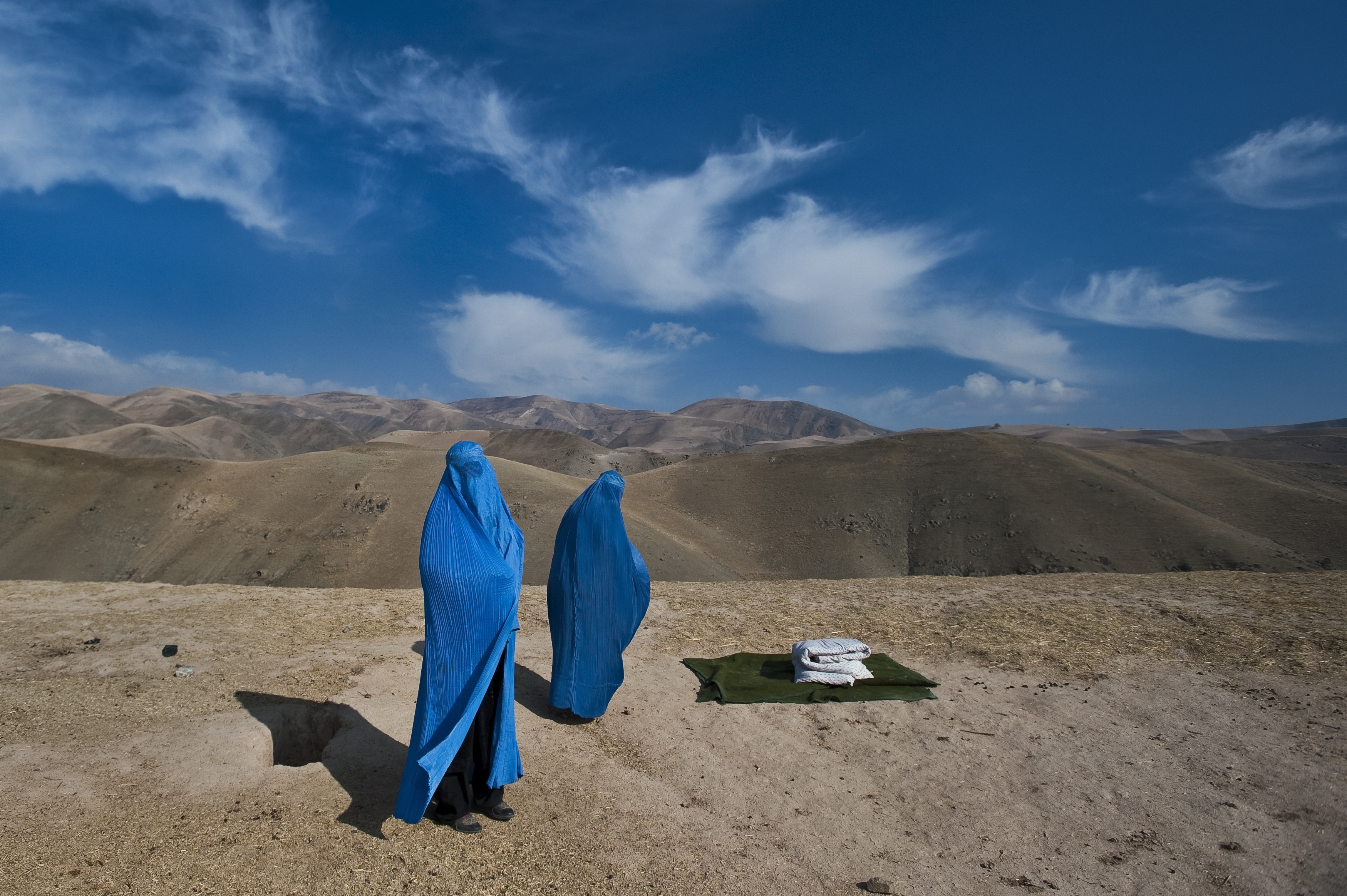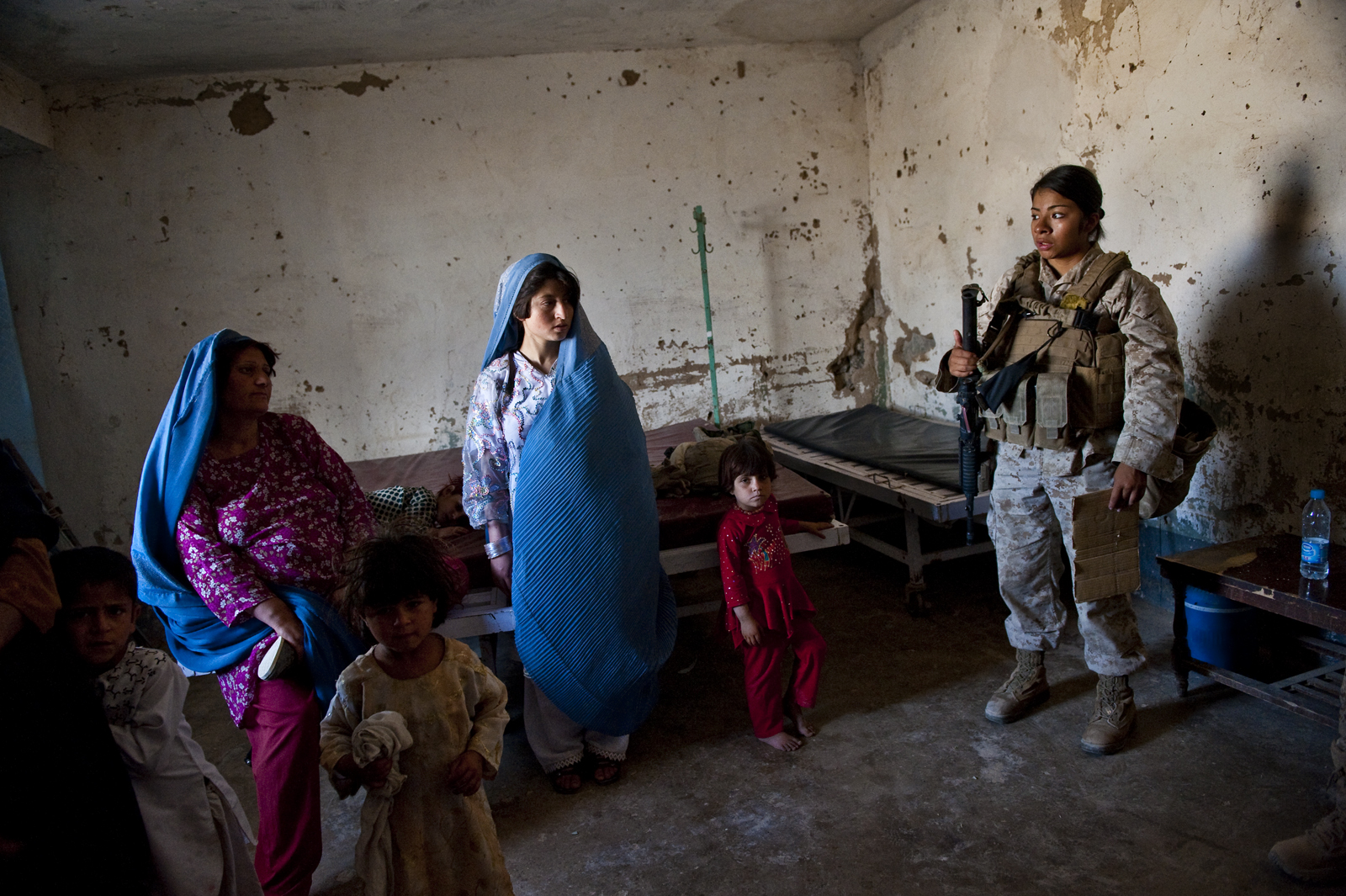-
Youth Bulge, Demography-Security Dialogue, and NATO
PRB Discussion on Population and National Security
›April 14, 2011 // By Schuyler NullThe Population Reference Bureau (PRB) held an online discussion this week with demographer Jennifer Dabbs Sciubba of Rhodes College on the topic of “Population and National Security.” On tap were questions on sex ratios, youth bulge, the definition of “national security,” whether the United States should be giving population and health-related advice, and other demographic security topics. Click through to PRB for the full transcript, or check out some select questions from ECSPers Richard Cincotta, Geoff Dabelko, and Schuyler Null below:
Richard Cincotta: Jennifer, my concern is with the lack of specificity that seems inherent in the youth bulge model in terms of civil and ethnic conflict. In other words, the highest probability of civil conflict (often protracted) is associated with very young populations – the Afghanistan, Iraq, sub-Saharan African situations. But, there is also a situation that arises among populations that are demographically somewhat older that is associated with democratization (i.e., the North African situation). These seem to have been conflated by the press and political scientists, yet they are demographically and politically very different cases. Any thoughts on how to recognize these and separate them?Jennifer Dabbs Sciubba: Rich, I think that until we have a stronger theoretical foundation for understanding the conditions under which a “youthful” population leads to civil conflict (very young pop) or democracy (slightly older pop) it will be hard to relay the difference in these two structures to non-experts. The democratization connection, in particular, needs to be refined to move firmly away from correlation and into causation. Right now, it seems to me that we give the same theoretical reasoning to both conflict and democratization (motive, cohort crowding). Do you agree?
Geoff Dabelko: Is the security community, so accustomed to framing issues as threats, internalize your messages about opportunity? Is there a recognition that low cost interventions such as provision of voluntary family planning services could be part of a holistic sustainable security approach? What are the steps that would need to happen to gain more adherents to this perspective?
(Editor: Read more discussion between Cincotta and Sciubba here and here)Sciubba: I’m sorry to say, but no, not really. The positive perspective does not resonate much because most in defense and intelligence are tasked with imagining the worst-case scenario. Opportunities and happy stories just do not fit in this paradigm (or even most of their job descriptions). I’ve tried to figure out what needs to happen to get them to pay attention to prevention, and the only place I see some chance of breaking through is in discussing Afghanistan. Many realize the challenges posed by Afghanistan’s young and growing population and there is some recognition that family planning may be relevant there. I think that for a paradigmatic shift to occur, it would have to be top-down – the vision of the President, Secretary of Defense, etc.
Dabelko: What would be the benefits of demographers and population experts taking more seriously a dialogue with the security community? Your book shows why security sector actors should pay attention to demography. Why should demographers pay attention to security?Sciubba: Some in the security community don’t necessarily understand the assumptions behind demographic projections or other aspects of the data, which means they sometimes misuse the info or distrust it and discard it all together. I also think that scholars of any discipline have a responsibility to understand how their work is being used.
Dabelko: What will be the subject of your next book?Sciubba: I’ll be returning to the politics of population aging. I’m particularly interested in comparing how different regime types have dealt with these issues, including not just Western European states, but also states like Singapore and Russia.
Schuyler Null: There’s been a lot of talk about how aging populations in Europe will affect defense sectors there, in terms of shifting budget priorities. But there’s also the aspect of how aging might affect European decision-making processes when it comes to foreign intervention (perhaps less willing put boots on the ground, stay for long, etc.).
Can you speak to how aging might affect the decision-making process and behavior of European countries when it comes to conflict in the future? How might aging affect the operation of NATO or the UN?Sciubba: Isn’t France a puzzle right now given your question? France, a low fertility country with an aging population and HUGE challenges ahead in terms of paying for entitlements to seniors, has recently shown a greater willingness to contribute to military missions. There is no doubt that aging states in Europe will be under strain trying to meet their promises to seniors and also maintain defense. But, European states still feel that there are sufficient threats in the world to warrant maintaining a military. They are trying to reduce redundancies among themselves and increase their efficiency – great cost-saving measures. Technology can compensate a bit as well. I think European states are willing to use their militaries when the threat is sufficient. Aging, however, may raise the threshold for what qualifies as “sufficient” and US-European opinions on what qualifies may increasingly diverge.
See the full transcript of questions and Sciubba’s responses at the Population Reference Bureau. -
What’s the Link Between Population and Nuclear Energy?
›The popular Big Green Purse blog, written by best-selling author Diane MacEachern, recently asked the Worldwatch Institute’s Robert Engelman, “What’s the Link between Population and Nuclear Energy?” The blog, which encourages women to use the “power of the purse” to improve the environment, wanted to know: “Why aren’t we talking about reducing population as part of our global strategy to minimize dependence on power sources [like nuclear energy] that pollute the environment and threaten people’s health?”
While “reducing population” is not possible, slowing population growth may be, if fertility rates continue to fall. As always, Engelman answered the tough question with thoughtful aplomb, offering three core values as a starting point:One: see the global environmental dilemma not as a problem to be solved but as a predicament to be responded to. We can’t control our future, but we can act with integrity as we aspire to build just societies in an environmentally-sound world. Addressing our numbers can become part of that.
But I’m wondering how the readers of Big Green Purse – which is replete with media-friendly lists like “Top Ten Eco-Tricks” – can translate population and its messy intersection of human rights, health care, and consumption levels into an individual purchasing decision.
Two, embrace human rights as a foundation for our actions. All people – even if too many or consuming too much – have dignity and a right to be here. As it happens, population policies based on the right of all women to choose whether and when to bear a child actually slow the growth of population. …
Three, acknowledge that no one can claim a greater right than anyone else to use energy and natural resources. This is called equity. We cannot object if the poorest people living today and yet to be born succeed in gaining the means to consume as much as Americans do.
As Engelman writes, “The idea that we can easily trim our individual consumption to come into balance with nature – worthy as that effort is – looks increasingly naïve. If people in the developed world slash their per capita greenhouse emissions by half, their effort could be counterbalanced by people in developing countries boosting theirs by just 11 percent.”
Photo Credit: “Trojan Nuclear Power Plant,” courtesy of flickr user tobo. -
‘Dialogue’ Interviews International Reporting Project Fellows on Liberia
›Since 1998, the International Reporting Project has been a pioneer in the “non-profit journalism” movement that seeks to fill the gap left by much of the mainstream media’s reduction in international news coverage. IRP has provided opportunities to more than 300 U.S. journalists to travel to more than 85 countries to produce award-winning reports. This month on the Wilson Center’s Dialogue program, host John Milewski speaks with guests Sunni Khalid, Ed Robbins, and Teresa Wiltz. They recently participated in an intensive fact-finding visit to Liberia under the auspices of the International Reporting Project where they produced stories on the country’s ongoing development and women’s empowerment efforts (among other topics).
Sunni Khalid is managing news editor for WYPR in Baltimore, Maryland. Previously, he worked for Time, The Washington Times, USA Today, Voice of America, and NPR.
Ed Robbins is an independent, multi-award winning director, writer, producer, and videographer. Outlets for his work have included PBS, The Discovery Channel, National Geographic Channel, ABC, and the BBC.
Teresa Wiltz is a senior editor for The Root, where she helps oversee the production of the African-American web-magazine. She previously served as a staff writer for The Washington Post’s style section.
The full 30 minute interview is available at the Wilson Center.
To hear more about their projects, see The New Security Beat’s “A Lens Into Liberia: Experiences from IRP Gatekeepers.” -
Food Price Shocks and Instability Highlight Weaknesses in Governance and Markets
›
Unrest across the Middle East has been front-page news for weeks, with commentators searching for explanations to account for the shifting political winds. Many, such as Thomas Friedman and Kevin Hall, have drawn connections between food prices and instability. But, as they point out, high food prices do not deterministically lead to unrest. Instead, rising prices highlight the degree to which governments and governance processes provide and ensure sustainable livelihoods for their people. What these and other commentators point to is that recognizing the role of government in providing food and security is vital: high food prices, they argue, don’t directly cause unrest, but high food prices in poorly managed countries creates a dangerous environment in which unrest may be more likely.
-
Portraits of Women From Afghanistan to the DRC
A Conversation on Art and Social Change
›“At the core of human rights and artistic behavior is respect for human dignity. It is this that unites art and justice,” said Jane M. Saks, executive director of the Institute for the Study of Women and Gender in the Arts and Media, speaking at an event cosponsored by the Environmental Change and Security Program and the Africa Program at the Woodrow Wilson Center. Lynsey Addario, MacArthur-winning photographer and former Institute fellow, joined Saks to share striking photographs highlighting the effects of conflict on women and girls around the world. [Video Below]
The Power of Art
“Art is inherently political because it has the power to really engage in social justice,” Saks said. The Institute that she helped found promotes art that pushes boundaries and creates conversations about peace and war, so as to “add to the accepted canon of understanding of conflict.” As part of this effort, the Institute created the exhibition, “Congo Women: Portraits of War,” composed of photographs by Addario and others about violence against women in the eastern Democratic Republic of Congo (DRC).
Saks hopes that these “photographs saturated with human dignity” will create awareness and, ultimately, influence policy about the conflict in the DRC. The exhibition has traveled to more than 20 locations since its opening. In May 2009 it was installed at the Senate Rotunda during the Senate Foreign Relations Committee hearings on violence against women in conflict.
Addario, who said her work is drive by a desire to “give the people a voice,” has spent 15 years traveling deep into conflict zones all over the world, including Iraq, Sudan, and Afghanistan.
Women and Childbirth
Addario’s images reveal the often shocking conditions in which women around the world give birth. In Sierra Leone, she documented 18-year old Mamma Seesay, “one of thousands of women who die in childbirth.” Due to a shortage of doctors, lack of transportation, and high rates of child marriage, one in eight women in Sierra Leone die in childbirth. Afghanistan has the second highest rate of maternal mortality in the world, partly because “an Afghan woman will be pregnant up to 15 times in her life,” she said. “When you watch someone who in most other developed nations would survive without question, it’s just not fair.”
Throughout a decade of covering women in Afghanistan, Addario has sought to provide a “balanced picture” of their lives to American audiences. Her photographs show the milestones women have achieved since the fall of the Taliban: graduating college; driving cars; becoming actors, producers, or police officers; getting married; and giving birth.But her coverage of Afghanistan also contains stories like that of Fariba, an 11-year-old girl who doused herself with petrol and set herself on fire after being abused by her parents. The burn ward at the hospital in Kabul is full of such women who commit self-immolation “to escape their lives,” said Addario. An Afghan woman’s life “is worse than a donkey…there is no release for these women.”
“Give Us Your Guns”
In 2009, she went to the tribal areas of Pakistan to meet the Taliban. “Wrapped up like a cigar,” she posed as the wife of former New York Times correspondent Dexter Filkins and went into a room of 30 Taliban fighters “armed to the teeth.” The two spent the day with the Taliban and “by the end, they loved us,” she said. “The whole time they just laughed at us: ‘You Americans, you give money to the Pakistani government and they give it to us!”
While covering the conflict in Darfur, Addario had to convince UN peacekeepers to drive into a Janjaweed-occupied village so that she could verify how many people had been killed. “Every time we would go towards the village, the Janjaweed would shoot at us and so [the peacekeepers] would turn the cars around and go,” Addario said. To convince the peacekeepers to go in anyway, she said to the commander: “Just give us your guns. We’re gonna go in ourselves if you don’t.” When they finally drove towards the village, “the Janjaweed set it on fire right in front of us, and we just kept driving, and when we got there they had left,” she said.
Addario has spent years as a single woman traveling around the world and throughout conflict zones. “Women in Afghanistan think I’m insane,” she said. “They think I have a lonely, miserable life.” But she believes that as a woman working in conflict zones, she has a unique ability to access places that a man could not and a mission to tell the stories that she hears. “For me it’s about showing the greater American public what’s happening.”
Sources: Institute for the Study of Women and Gender in the Arts and Media, National Geographic, The New York Times, Public Radio International, Slate, UNICEF, and the U.S. Senate Committee on Foreign Relations.
Photo Credit: Woman in labor with her mother on the way to the hospital in Afghanistan and a U.S. Marine in Afghanistan, used with permission courtesy of Lynsey Addario and the VII Network. -
‘Blood in the Mobile’ Documents the Conflict Minerals of Eastern Congo
›With Blood in the Mobile, Danish director Frank Poulsen dives into the eastern Democratic Republic of Congo (DRC) to document a vicious cycle of conflict that has claimed millions of lives, produced rampant humanitarian abuses, and is driven in part (though not entirely, it should be noted) by the area’s rich mineral resources – all under the noses of the world’s largest peacekeeping operation.
The minerals extracted in the eastern DRC – tin, tantalum, tungsten, and gold, mainly from North and South Kivu provinces – are used in cell phones around the world. The trailer shows Poulsen gaining access to an enormous tin mine in the area – the biggest illegal mine in the Congo, he says – capturing powerful footage of the squalid and dangerous conditions that thousands of often-teenage workers labor under for days at a time.
“Four years ago this place was nothing but jungle,” narrates Poulsen. “Today, 15,000-20,000 people are working here [and] different armed groups are fighting to gain control over the mine.”
Though Poulsen is pictured making dramatic phone calls to Nokia (the largest cell phone manufacturer in the world), the issue of conflict minerals from the DRC and places like it is in fact more than just a blip on the radar screens of most leading technology companies. The NGO the Enough Project in particular has been championing the cause and bringing it to tech companies’ doorsteps for quite some time. Their efforts have helped produce an action plan for certifying conflict-free supply chains (complete with company rankings) and also helped lead to passage of the United States’ first law addressing conflict minerals this fall.
However, Poulsen’s message of the developed world taking responsibility for sourcing is commendable. Efforts like this that have led to the adoption of corporate responsibility initiatives like the Cardin-Lugar amendment, a similar measure in the works for the European Union, the Extractive Industries Transparency Initiative, and the Kimberley Process for diamonds.
Blood in the Mobile premiered this fall at the International Documentary Film Festival and the producers are “in dialogue with different U.S. distributors,” according to their Facebook page, where those interested are advised to stay tuned.
Sources: BloodintheMobile.org, Enough Project, EurActiv.
Video Credit: Blood in the Mobile Official Trailer. -
A Lens Into Liberia: Experiences from IRP Gatekeepers
›The International Reporting Project (IRP) gives “editors – the ‘gatekeepers’ – a chance to get out of the newsrooms and to see for themselves the importance of international affairs,” said John Schidlovsky, director of IRP, at a Wilson Center event about the independent journalism organization’s recent two-week trip to Liberia with 11 U.S. news editors. [Video Below]
Schidlovsky stressed the importance of providing international opportunities for journalists in the face of news industry budget cuts. IRP fills the gap by sending gatekeepers, who help determine what news items will be selected for publication or broadcast, to countries that are often underrepresented and neglected in mainstream media.
Three of the gatekeepers, Sunni Khalid, managing news editor at WYPR Baltimore; Ed Robbins, a video journalist; and Teresa Wiltza, senior editor for The Root, shared their observations from their Liberia trip, as well as their insights into the challenges of international reporting.
Economic Challenges and Opportunities
Liberia is slowly beginning to rebuild its economy after a 14-year civil war with more than 200,000 casualties, but there are still “tremendous challenges,” said Khalid. “How do people survive? What kind of jobs do they have? How do they feed their families?”
According to World Bank figures, 84 percent of Liberians earn less than $1 a day, and more than 94 percent earn less than $2 a day. The government’s annual budget is only $369 million, the official unemployment rate is 85 percent, and corruption and lack of infrastructure remain major concerns.
Despite these problems, “Liberia has a lot of good points going for it,” said Khalid. Investment in the country’s raw materials is growing; most recently, the country signed a $7 billion deal with China and a European consortium to continue iron-ore mining.
Initially expecting to “write an obituary for Liberia,” Khalid said he “came out of this trip fairly optimistic about Liberia’s future.” With its “small population, great location, and mineral wealth,” as well as “competent political leadership,” Liberia can take advantage of its potential, he said.
“Capturing the Flavor” of Liberia
Robbins hopes to paint a multidimensional picture of Liberia and “capture the flavor of the country beyond Monrovia,” with his series of short films, which will be available on the websites of both Time and the International Reporting Project,
Robbins previewed one of these films, a profile of the chair of the Liberian Women’s Initiative, Etweda “Sugars” Cooper, who he says “embodies a certain power of a lot of Liberian women in her dedication and also her love for the country.”
At the local level, “the problems of recovery and development are all there in miniature,” said Robbins. But with dedicated leadership from people like Cooper, communities are slowly beginning to rebuild the schools, roads, hospitals, and other infrastructure that was destroyed in the civil wars.
“When you read books and articles, it tends to be really focused on the war and the devastation,” said Robbins. But there is also a sense of optimism among Liberians: “you can see hope in these people, a sense there is something there,” he said.
Empowering Women and Ending Rape
Wiltz pointed out that, “there is a prevailing sense of hope,” particularly among the older generation of women. After years of violence, these female “peace warriors” led the movement that ended Liberia’s civil war. But seven year later, “for women there, the biggest issue is that of economic empowerment,” said Wiltz. “They’re feeling empowered, but they’re broke.”
Sexual violence has become “part of the national psyche,” Wiltz said. During the civil war in Liberia, it has been estimated that more than 60 percent of the female population was raped. Today, “everyone seems sensitized to the issue, and yet it’s still a huge problem,” she said. Sexual violence is still common despite the prevention efforts of radio campaigns, NGOs, and Liberian President Ellen Johnson-Sirleaf.
“You’re in a country where families were destroyed by war,” Wiltz said. In the process of rebuilding Liberia, the new challenge is to engage and empower a new generation of young women and girls. “Underneath the surface there is all this pain and this legacy of extreme cruelty, but they very much want to overcome this.”
Much of the gatekeepers’ coverage is available online: Sunni Khalid produced a week-long series of radio pieces for WYPR, an NPR affiliate; Ed Robbins produced a series of short films for Time; and Teresa Wiltz published several articles on The Root.
Sources: CIA World Factbook, U.S. State Department, World Bank, World Health Organization, WYPR.
Photo Credit: “Liberia Will Rise Again,” courtesy of flickr user Jason Judy. -
Where Have All the Malthusians Gone?
›Forget youth bulges and population bombs; lately, the population story has been all about the baby bust. The cover of this month’s Foreign Policy features “Old World: The graying of the planet – and how it will change everything,” by Phillip Longman, and author Ted Fishman recently appeared in The New York Times and on NPR to talk about his book, Shock of Gray: The Aging of the World’s Population and How It Pits Young Against Old, Child Against Parent, Worker Against Boss, Company Against Rival and Nation Against Nation. Nicholas Eberstadt covered similar issues in Foreign Affairs with his article, “The Demographic Future: What Population Growth – and Decline – Means for the Global Economy.”
To the extent that policymakers take away a sense of urgency to reform retirement institutions and potentially reevaluate military strategy, the recent spate of publications about aging is useful. But policymakers should not be misled into thinking that the population tide has turned and resources for education, development, and family planning are no longer necessary. While global population growth is slowing, it has not stopped, and the political and economic consequences of continued growth and youthful age structures across most of the Global South will be dire.
A Population Bomb…of Old People
Eberstadt, Fishman, and Longman argue for the need to prepare for a future where there are large proportions of elderly dependents and relatively few workers to support them, and they chronicle the many challenges that may result, including political resistance. The October protests in France against raising the pensionable age from 60 to 62 — which, despite the hullabaloo, fall far short of the levels needed to improve France’s long-term economic position — are but one example of the reform resistance they warn about.
The concern is that while the Global North – Europe and Japan in particular – scramble to meet the needs of their older citizens and preserve the health of their economies, their powerful positions in the international system are at risk. As Fishman states, “It now looks as if global power rests on how willing a country is to neglect its older citizens.” China, a country on the cusp of aging, has thus far chosen neglect over meaningful investment, stoking more fear that the Global North may fall behind.
Though a focus on economic health is useful, other aspects of their arguments do a disservice, particularly those that start from the premise that the days of Malthusian angst over the planet’s ability to support a rapidly growing population are long gone.
Echoing Fred Pearce in his The Coming Population Crash and Our Planet’s Surprising Future, Longman argues without reservation that dangerous population growth is a thing of the past, and instead, the world faces a “population bomb…of old people.” He even goes so far as to claim that “having too many people on the planet is no longer demographers’ chief worry; now, having too few is.”
I have to ask: what demographers did he talk to? Articles published over the last year in the field’s top journals — Demography, Population and Development Review, and Population Studies — certainly explore low fertility, but they also cover a range of youth- and growth-related issues and topics such as mortality, teen parenthood, and immigration. And within the field of political demography in particular there is still quite a lot of attention being paid to the implications of population growth and youth bulges on civil conflict and human security. Even Foreign Policy, in which Longman’s article appears, publishes an annual Failed States Index that argues there is an important relationship between demographic pressure and state collapse.
As studies like the Failed States Index and the National Intelligence Council’s Global Trends project show, contrary to Pearce et al., carrying capacity arguments are not completely outmoded. Regardless of how extreme the impact of an aging population will be on developed nations in the near future (although the United States will almost certainly be less affected than others), in many parts of Africa, South Asia, and the Middle East, population growth is straining local water and land resources and creating instability — issues that will likely be exacerbated by climate change.
Geographic Bias
If there really is more attention being paid among demographers to low fertility it may well be due to institutional and geographic bias. After all, most of the funding for demography comes from Western nations concerned with their own decline. Likewise, all the top journals are American or European.
Though it is correct that most advanced industrial states are aging because of low fertility, for a large part of the world, population growth is still the number one issue. Declining fertility in most countries of the world means that populations are getting older, but this is not the same as saying they have a problem with aging. Between 1980 and 2010, the median age of the less developed countries, excluding China, rose from 19 to almost 25 and the world’s least developed countries saw a rise from 17 to 20 years. Median age in more developed countries, however, went from 32 to 40 — a level twice that of the least developed countries.
Many of the low-fertility countries Longman cites — Iran and Cuba, in particular — are exceptions among developing countries, rather than the rule. The UN Population Division estimates that sub-Saharan Africa will gain 966 million people by 2050 – more than the current population of all of Europe – and, as Richard Cincotta and I have both argued on this blog previously, the total fertility rate (TFR) projections used in those estimations are likely low. Rapid population growth in sub-Saharan Africa has already exacerbated many countries’ abilities to meet the growing needs of their populations, causing civil conflict and instability, and will continue to do so in the future.
Why is it Important to Get it Right?
Alarmism is useful when it grabs the attention of policymakers and a public that is overloaded with information, but it is also risky. Both Pearce and Longman take jabs at Paul Ehrlich because his “population bomb” never exploded. What they fail to note is that Ehrlich’s predictions could have proven right, except that he was successful at scaring a generation of policymakers into action. Funding towards population programs increased greatly in the wake of such research. If those of us who write about the dangers of aging are successful, perhaps we will be so lucky to look as foolish as Ehrlich one day.
If these warnings fall on deaf ears and policymakers do not act to reduce the burden of entitlements, certainly budgets will be strained beyond capacity and the dire future predicted by Fishman, Pearce, and Longman may well become a reality. On the other hand, if policymakers similarly disregard carrying capacity issues in the developing world, conflict and misery are sure to continue in these places and may well worsen.
Jennifer Dabbs Sciubba is the Mellon Environmental Fellow in the Department of International Studies at Rhodes College. She is also the author of a forthcoming book, The Future Faces of War: Population and National Security. Follow her on Twitter at @profsciubba for more on population-related issues.
Sources: Foreign Affairs, Foreign Policy, NPR, National Intelligence Council, The New York Times, Population Reference Bureau, Reuters, UN.
Photo Credit: Adapted from “Protest/Manifestation,” courtesy of flickr user lilicomanche.
Showing posts from category media.










